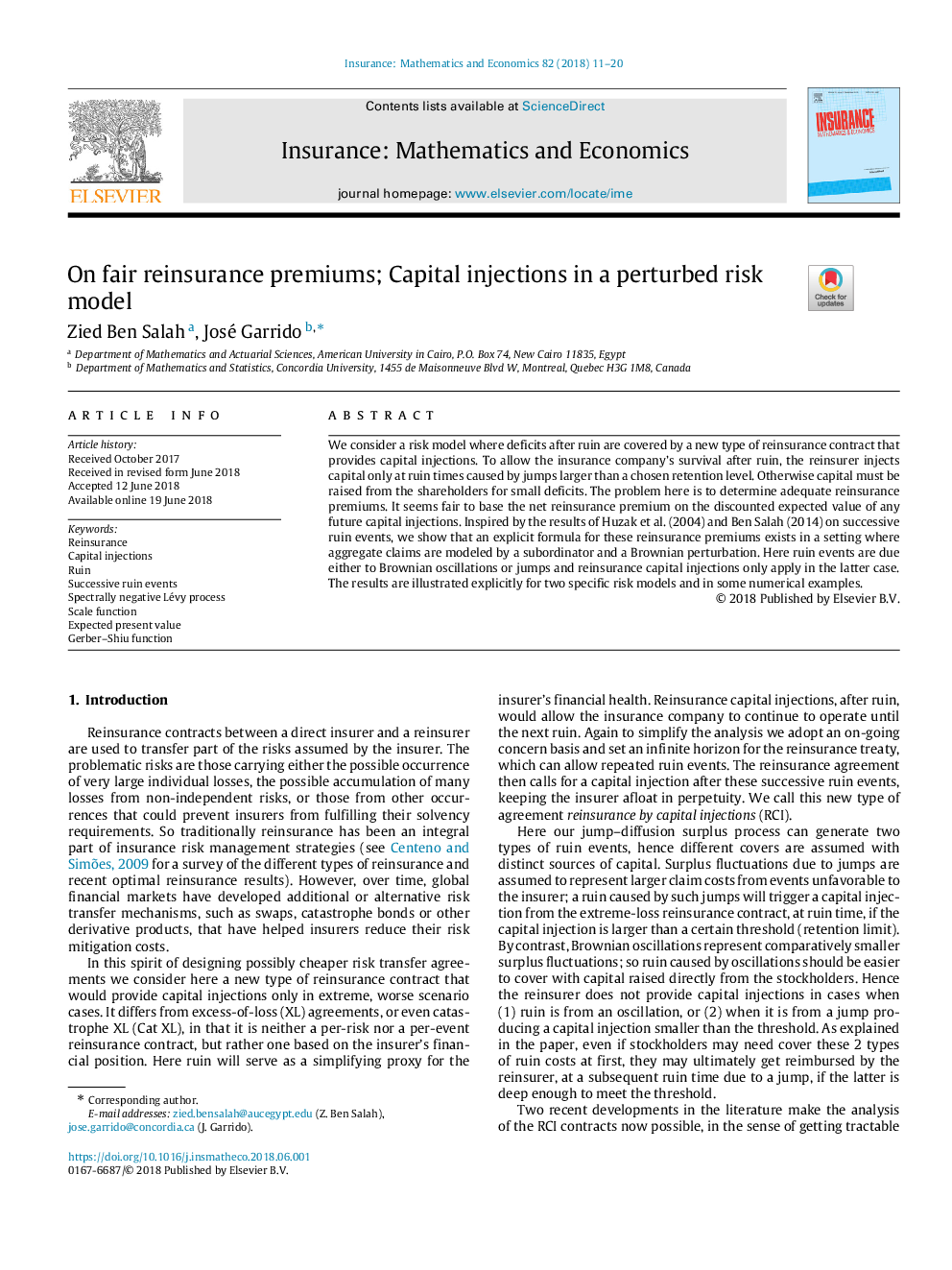| Article ID | Journal | Published Year | Pages | File Type |
|---|---|---|---|---|
| 7354516 | Insurance: Mathematics and Economics | 2018 | 10 Pages |
Abstract
We consider a risk model where deficits after ruin are covered by a new type of reinsurance contract that provides capital injections. To allow the insurance company's survival after ruin, the reinsurer injects capital only at ruin times caused by jumps larger than a chosen retention level. Otherwise capital must be raised from the shareholders for small deficits. The problem here is to determine adequate reinsurance premiums. It seems fair to base the net reinsurance premium on the discounted expected value of any future capital injections. Inspired by the results of Huzak et al. (2004) and Ben Salah (2014) on successive ruin events, we show that an explicit formula for these reinsurance premiums exists in a setting where aggregate claims are modeled by a subordinator and a Brownian perturbation. Here ruin events are due either to Brownian oscillations or jumps and reinsurance capital injections only apply in the latter case. The results are illustrated explicitly for two specific risk models and in some numerical examples.
Keywords
Related Topics
Physical Sciences and Engineering
Mathematics
Statistics and Probability
Authors
Zied Ben Salah, José Garrido,
